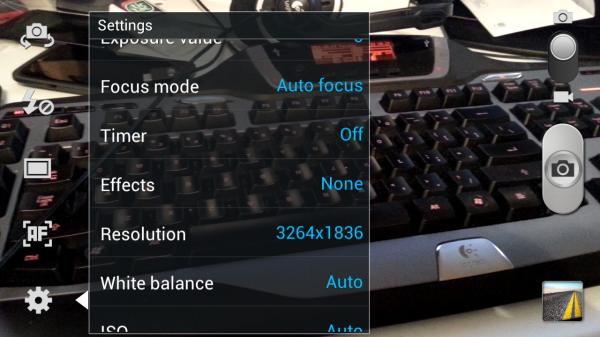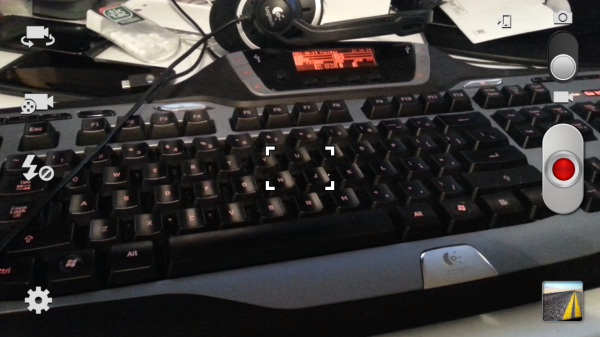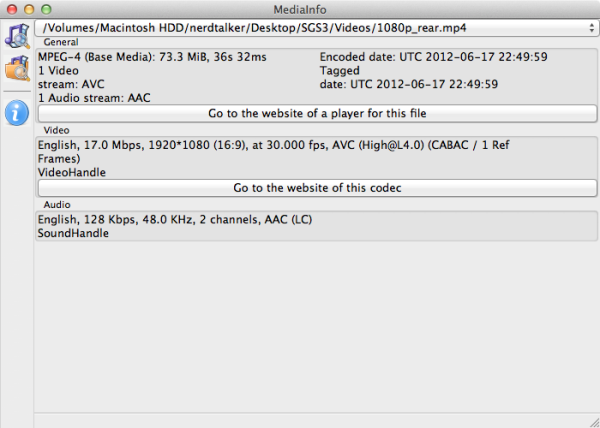Samsung Galaxy S III Review - AT&T and T-Mobile USA Variants
by Brian Klug on June 20, 2012 12:01 AM ESTThe SGS3 with MSM8960 also captures 1080p30 video, just like the Exynos 4412 based international SGS3. I captured videos at 1080p, 720p, and with image stabilization turned on at the usual test location, and like normal uploaded a copy of the video to YouTube, and our servers for you to download without the transcode.
The USA SGS3s encode video at an even higher bitrate than the SGS2. It’s 17.0 Mbps H.264 high profile CABAC with 1 reference frame. For comparison, SGS2 was 15 Mbps high profile SGS2 was actually 17.0 Mbps as well. Audio is 128 kbps 48 kHz stereo AAC. The 720p video encode paramaters are a bit lower, at 12.0 Mbps H.264 baseline, with the same audio settings.
Last time around, SGS2 was among the best, if not the best, for video encode. The SGS3 is likewise using the best encode settings I’ve seen thus far at 17 Mbps high profile. Best of all, the SGS3 doesn’t drop any frames from what I can tell, as the end FPS in MediaInfo was exactly 30, and watching the videos I don’t see anything dropped. It’s curious to me too that this is being done (as far as I know) on the MSM8960 when partners like HTC are still using 10 Mbps baseline on their highest end products and dropping frames.
The other things worth mentioning about video encode is that the 1080p mode without anti shake now uses the full field of view of the sensor in the horizontal direction. This is a big improvement over the center crop modes I see a lot. If you turn anti shake on, you do appear to lose some pixels around the edges (which is expected, probably 16 or so in x and y). Unfortunately, the EIS mode appears to be severely glitched, producing very shuddery video which jumps around as EIS works. I’d keep this turned off until it gets fixed.


Left - still shooting mode (16:9 6 MP), Right - video capture (1080p) with same Field of View
Inside the video capture UI everything is pretty much the same as the still image capture UI. What’s worth mentioning is that like the One X, SGS3 has a capture button which enables you to save full size 1080p frames while capturing video. My favorite new feature is suble - after tapping to focus once while video recording, you’ll get a box with AF in brackets.
Tapping on this stops CAF (continuous auto focus) from running, effectively giving you an AF lock. This is super useful as I often read many complaints about the breathing effect that CAF adds to video capture while it runs - hold this down and it won’t run until you release it - a very useful feature if you’re serious.












107 Comments
View All Comments
themossie - Thursday, June 21, 2012 - link
You still see used Droid X (released 23 months ago) selling for $150 on Craigslist. Droid 2, released a month later, often sell for $125. Can recoup what you paid for them (contract prices) after 2 years? Not bad at all.I've made a pretty penny buying used phones cheap off Craigslist, using them, then flipping them 6-12 months for profit. Then you get events like the Windows Phone Challenge...
steven75 - Friday, June 22, 2012 - link
Just looked at ebay completed listings for Droid X. Average completed sale price is about $75.In comparison looked at iPhone 4 16 GB (released shortly after the X and the average completed sale price is about $250.
themossie - Saturday, June 23, 2012 - link
eBay prices are cheaper than Craigslist. iPhone 4 averages ~$300 here (to the extent I can tell from my Craigslist experience!)Certainly not saying Android phones hold the resale value of iPhones! But I can consistently recoup what I paid (on contract) for the device.
zorxd - Thursday, June 21, 2012 - link
I agree. Who cares about how it "feels" anyway? I buy phones for their functionality, not their look.Also as you said, plastic is light and shock absorbant. Also it doesn't block RF. Seems like the perfect material for a phone. I honestly which we had less metal and glass and more plastic in phones.
shaolin95 - Wednesday, June 20, 2012 - link
Comments like this make me wonder if people think phones are supposed to be used as hockey pucks....come on now.ProPhotoman - Tuesday, July 3, 2012 - link
No one wanted a 1 pound phone , so they used plastic to keep the weight down. They know that most will put a case on it anyway.metafor - Wednesday, June 20, 2012 - link
Battery life seems to lag behind the One X. Which is disappointing considering LTE will only make it worse. But since -- unlike HTC -- Samsung launched this on both T-Mobile and Verizon, that makes it the go-to phone for those who don't want to jump on AT&T.Impulses - Wednesday, June 20, 2012 - link
HTC really dropped the ball in not getting a decent One variant on VZW. The new Incredible's kind of a joke...Impulses - Wednesday, June 20, 2012 - link
Meh, they they're not too far behind either... I agree the numbers are slightly disappointing considering it has a larger battery, but it's also a removable battery which makes it a wash IMO. The Wifi vs 3G results are interesting, I thought one of the biggest highlights of AMOLED was how it could potentially save a lot of power over LCDs... I guess that doesn't really pan out unless you visit a lot of sites with black backgrounds tho. :pThe EVO LTE results are wild tho, they're all over the place (which is why it'd be really nice to have at least one CDMA SGS3 variant reviewed). If you were to look at the 3G results only you'd conclude the CDMA stack is just a battery hog, but then it still trails the US One X (which has a smaller battery) on the Wifi test while demolishing it (and almost everything else) in the hotspot test. Doesn't make any sense!
Same SoC & display as the One X (AFAIK), any theories?
metafor - Wednesday, June 20, 2012 - link
A few. The CDMA and WiFi datapath could be far less power hungry than the HSPA+ to WiFi. In fact, it may even be a different WiFi module altogether. Hell, even something unnoticeable -- like signal strength of the WiFi/CDMA antenna and whether they interfere with each or not -- can make a big difference as the radios have to work harder to get a good signal.Stuff like this is hard to design, debug and quantify, especially when multiple radio interfaces are at work.